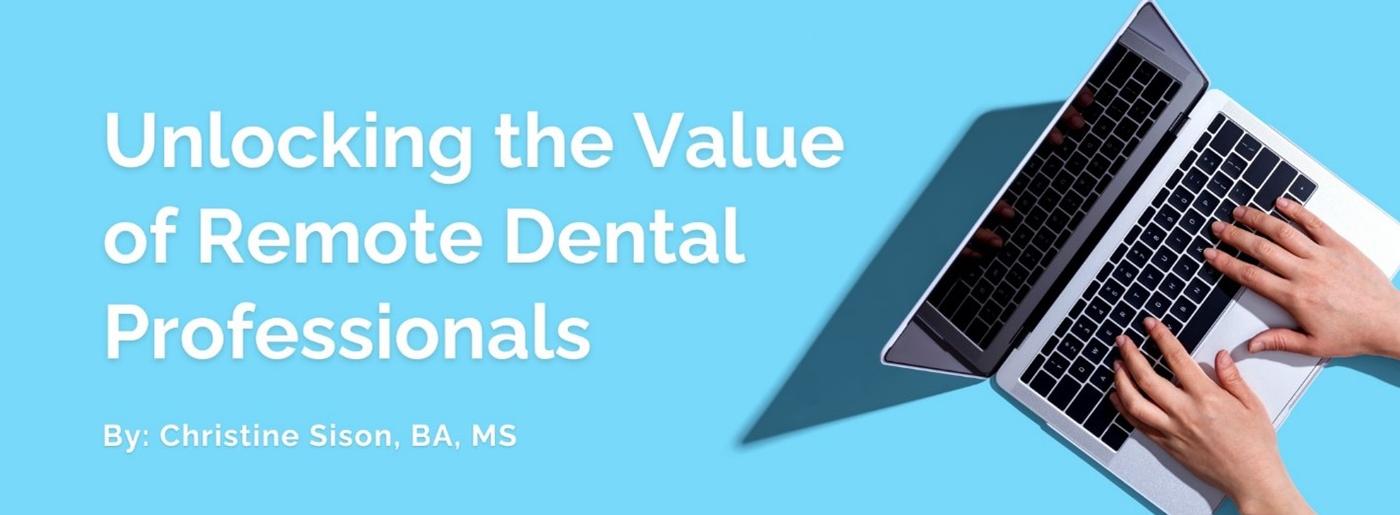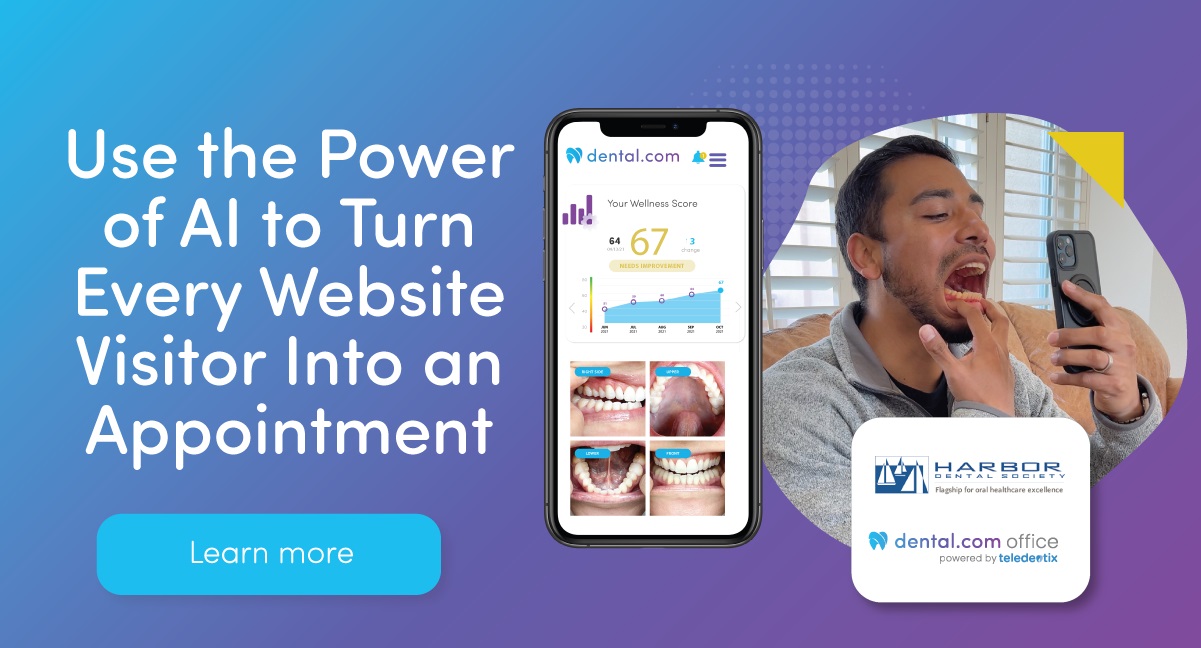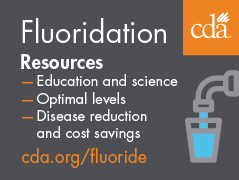Tuesday, Nov 21, 2023

This article summarizes common scenarios and best practices when considering a remote dental professional.
Traditionally, the blueprint for a private practice has been to have all front office tasks initiated and completed
within the four walls of the office. However, as the demand for skilled professionals often outpaces the available
workforce, practices have had to explore innovative solutions to tackle the staffing crises. With almost twice as
many jobs available than workers in the US, one such solution is the integration of remote dental professionals
into a team. This article highlights common scenarios and best practices for considering a remote
team member to optimize the efficiency and productivity of dental practice.
When to Consider a Remote Dental Professional
1. Overwhelmed Front Desk: Is your front desk swamped, struggling to manage daily tasks efficiently?
It might be time to consider bringing in remote support to lighten the load and ensure your front office
functions smoothly. Burnout is a major factor contributing to front desk team members leaving an office.
Providing additional support can improve the morale of your team and allow them to focus on
revenue-generating tasks.
2. Temporary Coverage: Whether it's due to sickness, vacation, or maternity leave of your in-house staff,
remote professionals can step in to provide temporary assistance and keep your practice running seamlessly.
3. Insurance Verification: Handling insurance verification can be time-consuming. Remote professionals can
help verify insurance details, allowing your on-site team to focus on other essential or patient-facing tasks.
4. Phone Support: Remote professionals can promptly answer (or return) calls and schedule
reservations, contributing to better customer service.
5. Training and Talent Gap Filling: If your on-site team requires additional training or assistance,
remote professionals can support training efforts and bridge skill gaps.
6. Hygiene Recare Calls: Timely and consistent hygiene recare calls are vital for patient
retention and practice growth. Remote professionals can provide a human touch to automated
patient reminders, increasing the effectiveness of a hygiene recare program.
7. Billing and Posting Support: Ensure your billing processes run smoothly with the assistance of
remote professionals who can handle billing and posting activities. Non-patient facing activities
such as these tend to be high on the list of tasks to be completed by a remote professional.
8. Patient Account Follow-Up: Timely follow-up on past due payments from patients is essential
for maintaining a healthy revenue cycle. Remote professionals can help in this regard.
9. Past Due Insurance Claims: Remote professionals can efficiently manage follow-up on past due
insurance claims, helping to ensure that your practice collects 100% of what you produce.
Things to Consider
There are a number of best practices to consider when integrating a remote team member into your office.
1. HIPAA Compliance: Ensure all communication tools and technology used to connect with remote team
members are HIPAA compliant to safeguard patient information.
2. Onboarding and Training: Allocate time for onboarding and training your remote team member. Proper
training is vital for them to adapt to your practice's unique requirements effectively. If you are “stretched too thin”,
consider hiring only experienced dental professionals to help bridge any training needs or contract with a
coach or outside party to assist.
3. Effective Communication: Maintain clear communication by holding daily check-ins, especially during the
initial stages of integration. Many practices include their remote team member in their daily huddles.
Adjust the frequency as your remote team member becomes self-sufficient.
4. Start Small, Scale Up: Begin with a small scope of remote work and gradually increase it to
minimize disruptions to your office's workflow. Be open to making refinements as needed.
5. Monitoring and Evaluation: Request regular productivity reports to assess the impact of the
role. These reports will help you understand if you need to modify, increase, or decrease the
workload or make compensation adjustments.
6. Flexible Scheduling: Be attentive to the hours and schedule, especially for tasks with varying
workloads like following up on past due insurance claims. In these scenarios, practices may need
to provide more hours upfront and reduce hours as they come to “maintenance” and reallocate
time to other activities as needed.
Embracing remote dental professionals can significantly benefit your practice by leveraging an
untapped workforce, reducing costs, and addressing local staffing shortages.
About the Author
Christine Sison is the CEO/Founder of Swiss Monkey. Swiss
Monkey specializes in connecting practices to remote dental professionals and provides a suite of remote worker productivity and performance tools. Ms. Sison has built and managed a dental practice for over 10 years and has her Bachelor of Neurobiology from UC Berkeley and a Master of Health Policy and Management from the Harvard School of Public Health. Prior to her work in dentistry, she conducted brain tumor research at University of California, San Francisco, assisted in the integration of information technology into clinics and hospitals, and later led the development of community-wide healthcare systems, medicine efforts.







